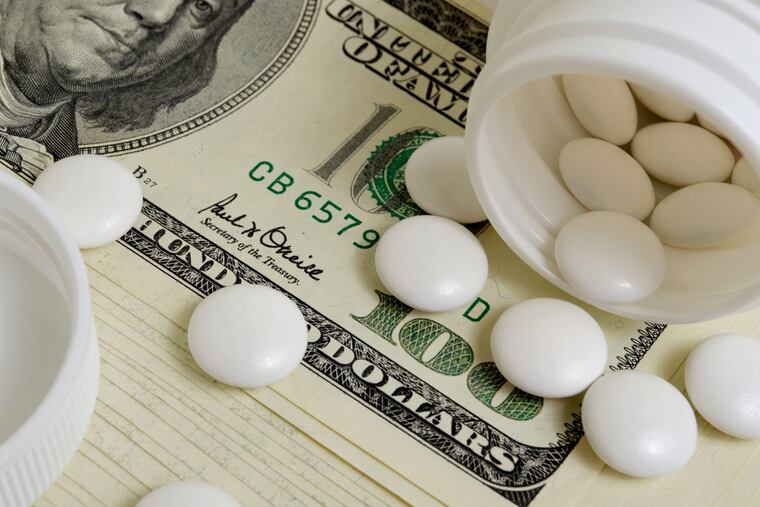Small number of brand-name drugs drive prescription spending to $100B, Blue Cross report finds
Branded specialty medications accounted for just 17 percent of prescriptions filled by Blue Cross Blue Shield members in 2017, but 79 percent of drug spending — a total of $79.5 billion.

Branded specialty medications accounted for just 17 percent of prescriptions filled by Blue Cross Blue Shield Association members in 2017, but nade up 79 percent of drug spending — a total of $79.5 billion.
Overall, prescription drug spending by Blue Cross Blue Shield insurers rose 2.2 percent, to $100.2 billion last year, even as spending declined for generic medications, which accounted for the majority of prescriptions filled, according to new data by the Blue Cross Blue Shield Association.
Nationally, insurers have pushed members toward generic medications as a way to stem rising drug spending. But as Blue Cross data show, generic medications can do only so much to control total drug spending.
"The drugs people are filling are generic, but costs are driven by these exceptionally pricey drugs that don't have a generic competitor. With our current patent system, there's not much that can be done about that," said Cynthia Cox, director of health reform and private insurance for the Kaiser Family Foundation, which was not involved in the Blue Cross study.
In 2017, 83 percent of the prescriptions filled by Blue Cross Blue Shield insured members were for generic medications. Yet at $20.7 billion, those drugs accounted for just 21 percent of total spending.
Generic drug spending declined 3 percent between 2017 and 2016, according to the report, but spending on specialty and branded drugs, such as infused medications and cancer treatments, increased 4 percent.
The report is based on claims from more than 40 million people under age 65 with Blue Cross insurance, including those covered by Independence Blue Cross in Philadelphia and Horizon Blue Cross Blue Shield of New Jersey.
Still, increasing use of generic medications is an important tool for Independence Blue Cross, said Ginny Calega, a physician and vice president of medical management and policy for the Philadelphia insurer.
"Imagine if we weren't having the success with generics, what the rate of rise [in drug spending] would be," Calega said.
Overall generic drug costs have declined, but prices have increased for certain generic medications that are still being made by only one manufacturer and have little competition, said Eric Estes, Independence's senior director of pharmacy.
For example, the list price for Colchicine, a generic gout medication, is about $175 for 30 tablets. The brand-name version, Colcrys, has a list price of about $220 for 30 tablets.
In addition to continuing to push members toward generic options when available, Independence Blue Cross is encouraging doctors to play a bigger role in steering patients toward lower-cost medications. A new tool, called PreCheck MyScript, that can be embedded in electronic medical records system, allows doctors to check in real-time how medications will be covered by Independence insurance for a patient.